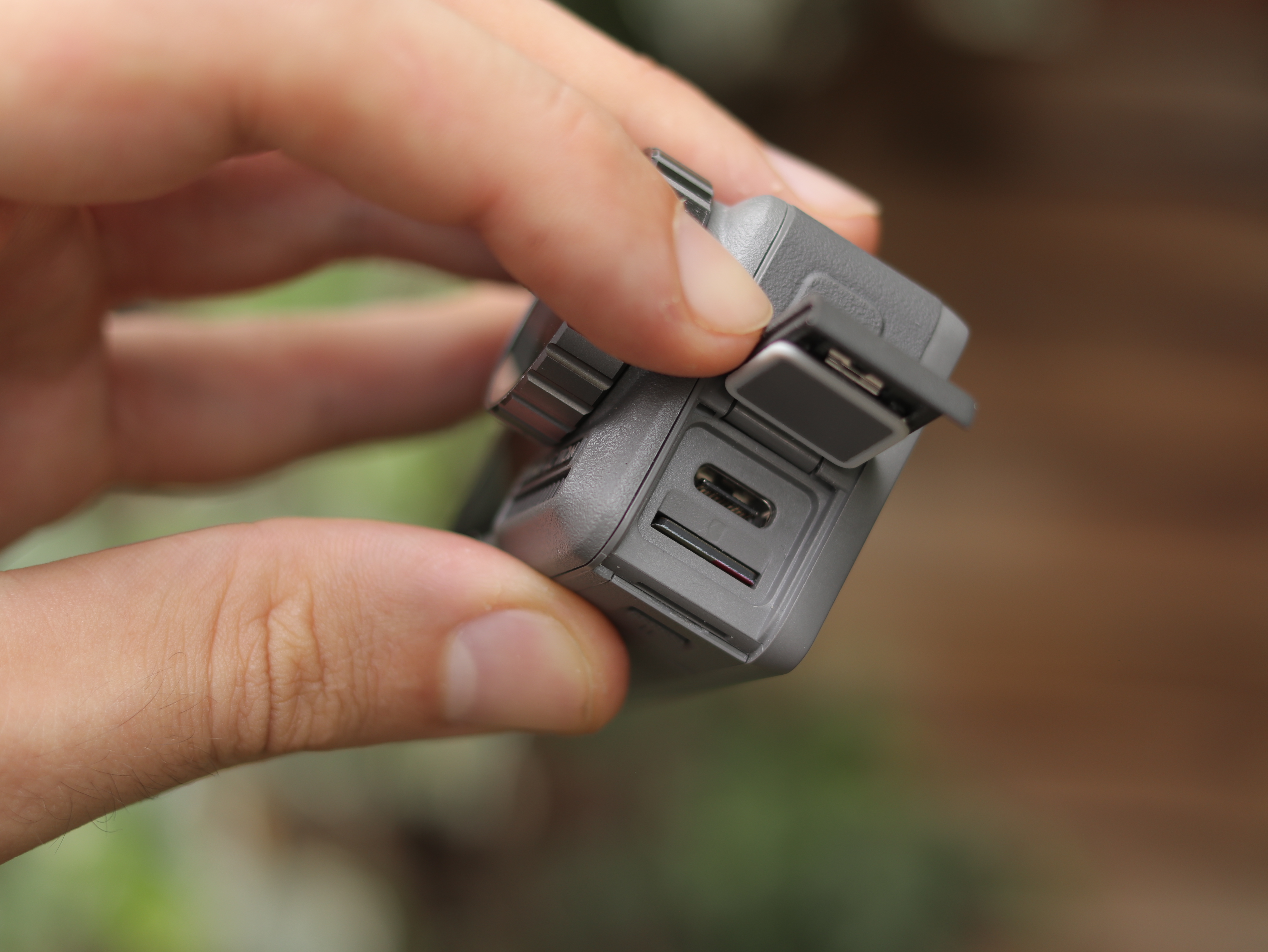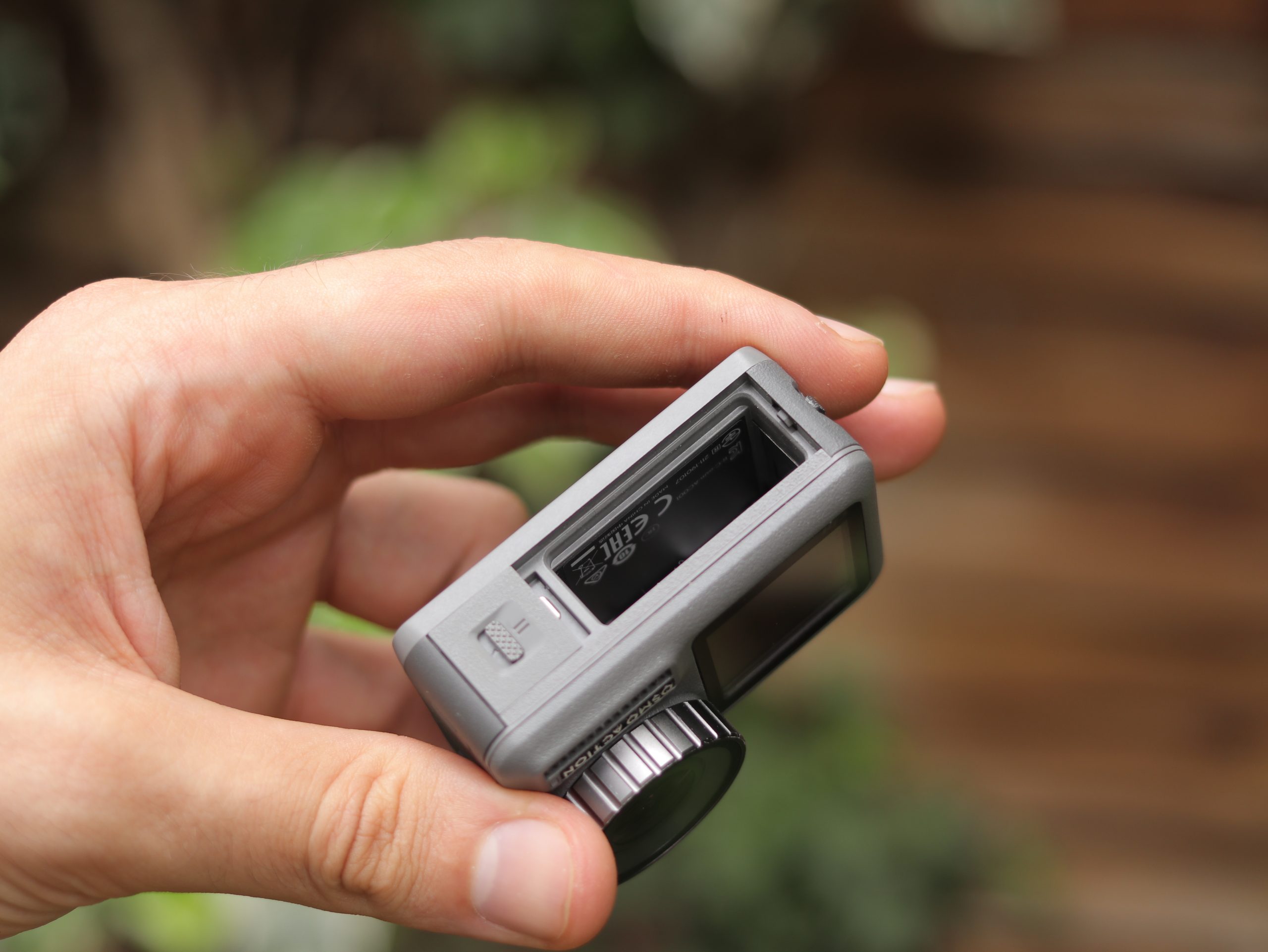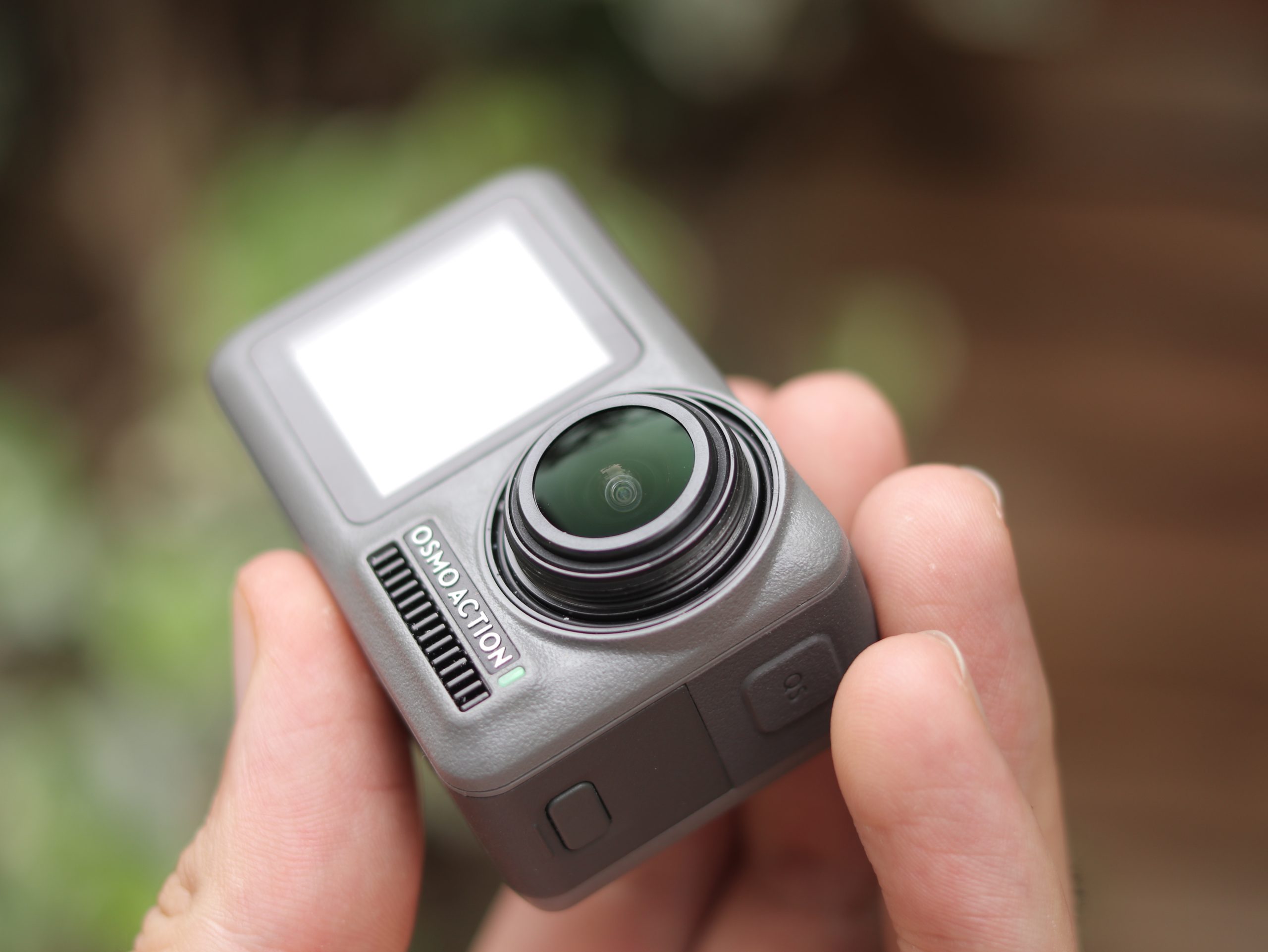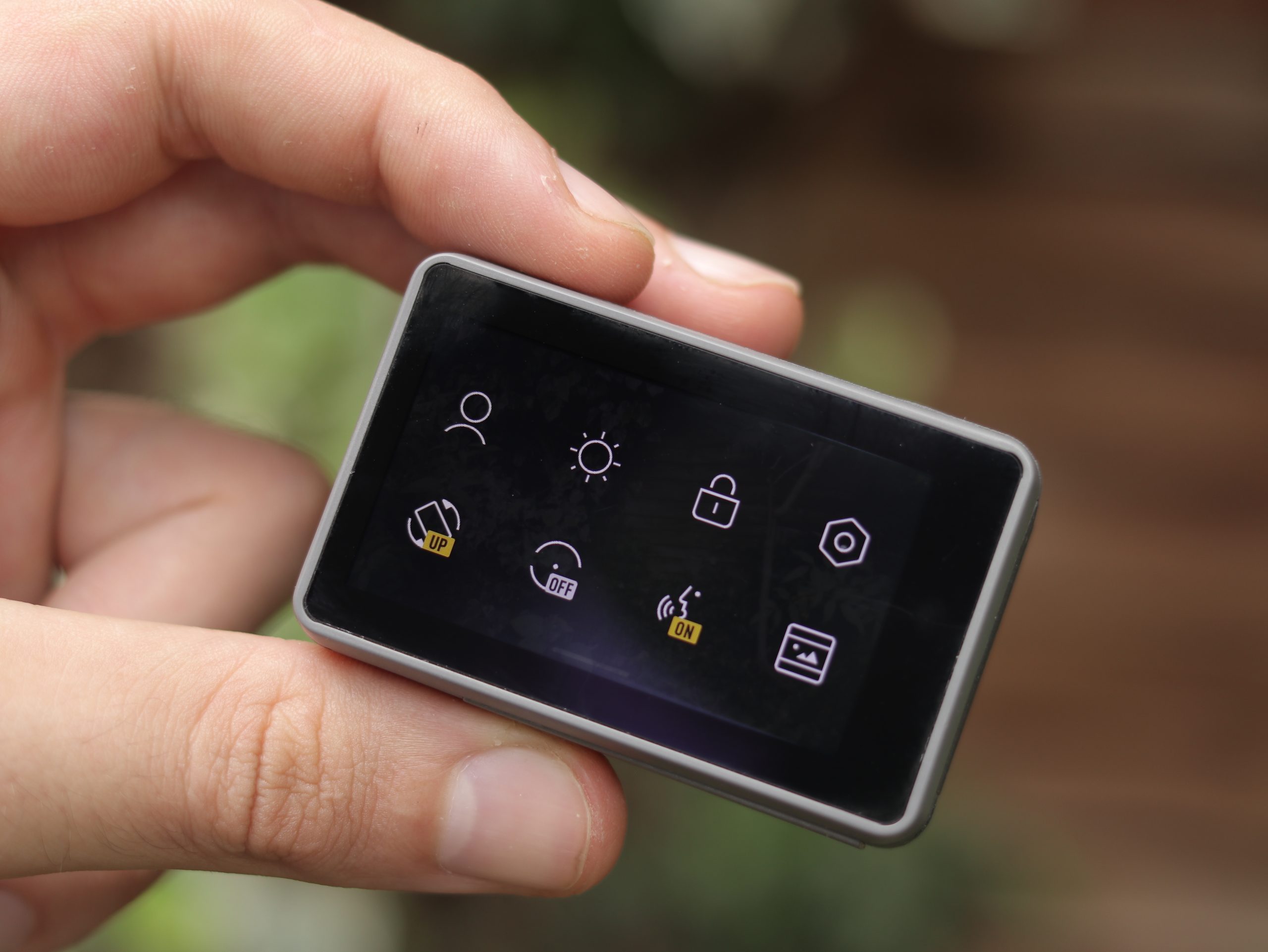DJI Osmo Action review
Out GoProing GoPro
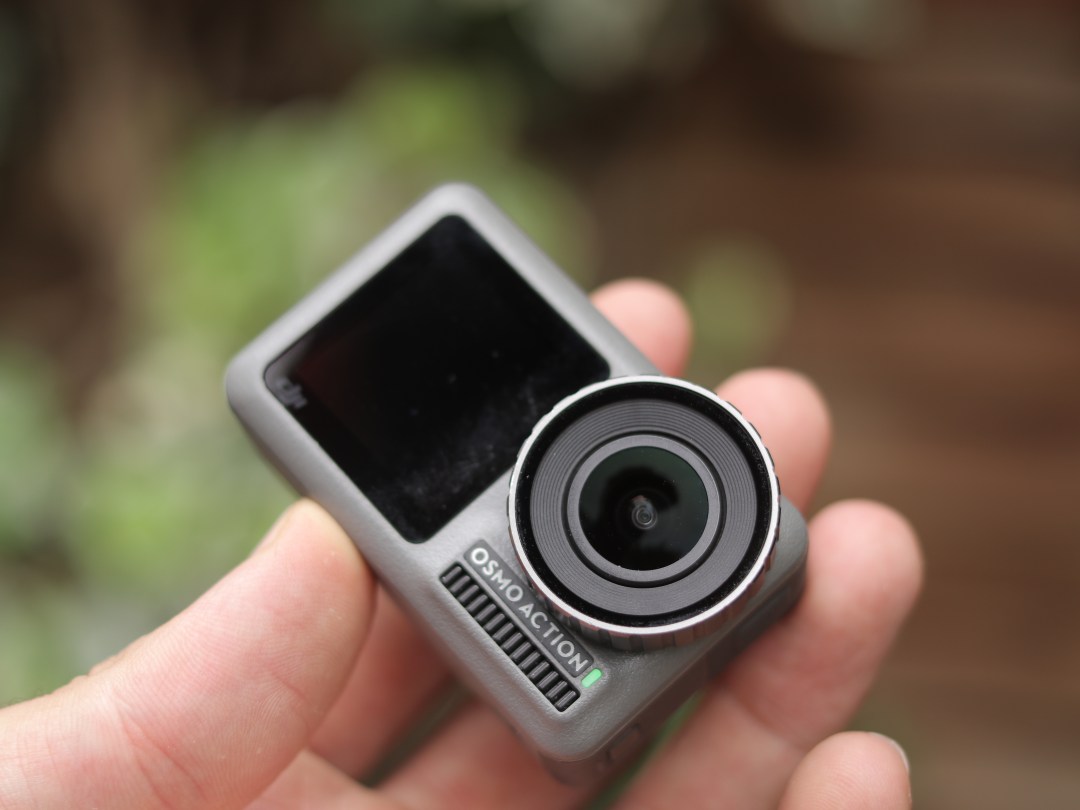
DJI isn’t known for its action cams, but that hasn’t stopped the drone and gimbal manufacturer from releasing the Osmo Action, a GoPro competitor that takes a steady shot at dethroning the Hero7 Black.
Packing in a very familiar design, comparable specs, RockSteady stabilisation and a neat front display, after a week with it, would we recommend you jump ship or hold on to your Hero?
Design: Doppelganger
The Osmo Action’s design is remarkably similar to that of the GoPro Hero7 Black.
It has a big screw-on lens protector at the front, behind which sits the ultra-wide money maker, the lens. The camera’s compact metal body has a rubberised, easy to grip wrap-around which houses a bunch of buttons and ports.
At the top are power and record buttons. On the left is the quick switch button, so you can swiftly swap between shooting modes, below which is a protected USB-C port and microSD card slot.
The pop-out 1300mAh battery is secured in place at the base of the Action with two latches, and there are microphones dotted around the camera’s body.
As for the back, it’s all screen.
The camera’s familiar design means that ergonomically, it’s all very predictable which is a blessing. In addition, it’s waterproof up to 11 metres, can handle temperatures up to -10°C, and ships with an adhesive mount and a camera housing, so you can secure it onto a helmet or dashboard.
Screen: From the front to the back
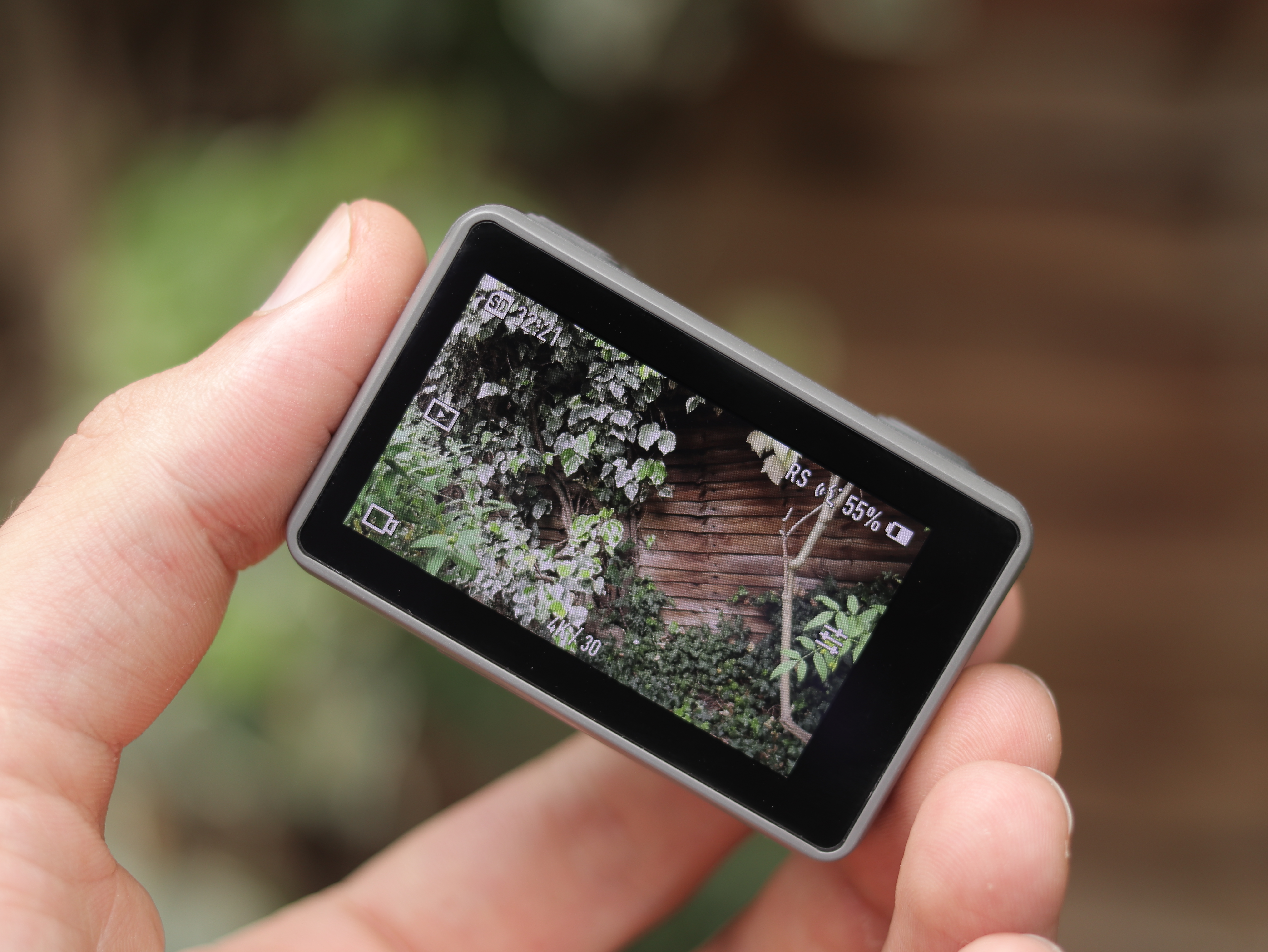
The main display around the back is a 2.25in touch screen with a resolution of 640×360 and a 16:9 aspect ratio. It also has a pixel density of 325 pixels per inch, about as sharp as an iPhone 6 screen.
As for the front, it’s a smaller 1.4in display, isn’t touch sensitive and is square, showcasing information above and below the preview image. To swap between the two, you just need to double tap the rear display with two fingers.
The screens are a real high-point of the Action, with the touch sensitivity around the back being perfectly responsive. Navigating the menu system is a comfortable series of taps and swipes and we were always able to see what was going on, even in sunny conditions.
Full disclosure: our use-cases were limited to a sunny London and a rainy Venice, so if you’re sand dune buggying or blue-sky snowboarding, you might challenge it more than we could.
Features: Anything you can do DJI can do better
Onto specs and the Osmo Action features a primary 12MP camera with an f/2.8 lens and a 145-degree field of view.
With a max ISO of 3200 across photos and videos, it captures video at up to 4K (16:9) 60fps, and photos at up to 12MP (4000 x 3000).
The camera can also capture HDR video, though at the expense of stabilisation, as well as slow motion and time-lapse footage too.
As for storage, there’s none on-board, but it takes microSD cards up to 256GB. You can pick up about ten accessories from DJI’s website at the time of this review’s publication – these include adventure sport essentials like a waterproof casing (up to 60m), and spare batteries. Meanwhile, GoPro’s official accessories number more than 40, and that’s not counting the third party options, which are innumerable.
It’s also worth noting, the Osmo Action doesn’t fit within GoPro cases, however, the mounting system is shared – so you can mount it on GoPro accessories when in its casing, which ships with it in the box.
Performance: RockSteady, with an echo
The first thing to talk about here is RockSteady. No, not the games studio, or the No Doubt album, OR the heartbreakingly underrated All Saints song.
When it comes to DJI, Rocksteady is its answer to GoPro’s HyperSmooth video stabilisation, and boy is it good. If you’re planning on picking up an action cam and just want the smoothest footage possible out of the camera with no editing or fussing, then the DJI Osmo Action betters the GoPro Hero7 Black.
Watching footage back, it’s as if you shot videos captured on the Action using a gimbal. It’s smooth but doesn’t look like wobbly jelly, like some stabilised footage does. So, the Osmo Action has the steadiest footage on the block, you can stop reading here and go and pick one up if that’s your priority – except, that’s not the whole story.
RockSteady works at up to 4K resolution at 60fps (16:9), which stacks up identically to GoPro’s HyperSmooth tech. What’s different is that the live preview on either of the Osmo Action’s screens lags by about half a second when it’s fired up.
This creates a weird visual echo, during which you see something happening in real life, then it happens on the screen shortly after – slightly odd if you’re vlogging, but catastrophic if you’re tracking a subject and need a real-time live preview to navigate the camera. Drop the framerate down to 30fps, and it gets rid of this delay.
As for video quality, the Osmo Action is a fantastic performer in good light. It aggressively exposes for faces, so makes for a great vlogging option – especially when paired with that front display. Skin tones captured by it look healthy and natural, and even when backlit, a subject will still be visible. Naturally, this can come at the expense of backgrounds, so occasionally, skies can be blown out, but generally speaking, in challenging conditions we found it to perform better than the GoPro Hero7.
Having said that, the GoPro produced a flatter image, which was generally easier to tweak in post-processing, so if you want to edit your footage, it could be the better option for you.
As for low light photos and videos, just like GoPros, it’s terrible.
When the lights go down, grab your smartphone, with flagships like the Huawei P30 Pro and iPhone Xs and Sony Xperia 1 wiping the floor with any action cam around at night.
If you’re after the widest angle possible, the GoPro Hero7 wins out. This isn’t noticeable in the default modes, but with GoPro’s SuperView option, it expands the field of view to 170 degrees, albeit with a fair bit of fisheye distortion. That’s by comparison to the 145-degree field of view captured by the Osmo Action.
Sound is captured respectably, but for anything with serious depth to it, you’ll need to use an external microphone. On the plus, the wind noise reduction works well, and voices don’t sound as warped as they do when the feature is fired up on the Hero7 Black.
The camera also supports voice controls, and these worked great. What was truly disappointing was the Mimo app, that’s meant to enable an Android or iOS device to act as a live preview controller for the Osmo Action.
Working across three devices, a Sony Xperia One, a Huawei P30 Pro and an iPad Air, 2nd Gen, we were unable to get it to connect more than once – and we tried at least 20 times, resetting the Osmo Action, and the phones multiple times.
As for battery life, we were pleasantly surprised with the Osmo Action. It’s able to capture over 60 minutes of 4K footage at 60fps, and if you’re shooting in short bursts, will last a day for most outdoor escapades.
Alternatively, for long shoots or weekends away, you can buy a couple of spares and swap them out.
DJI Osmo Action verdict
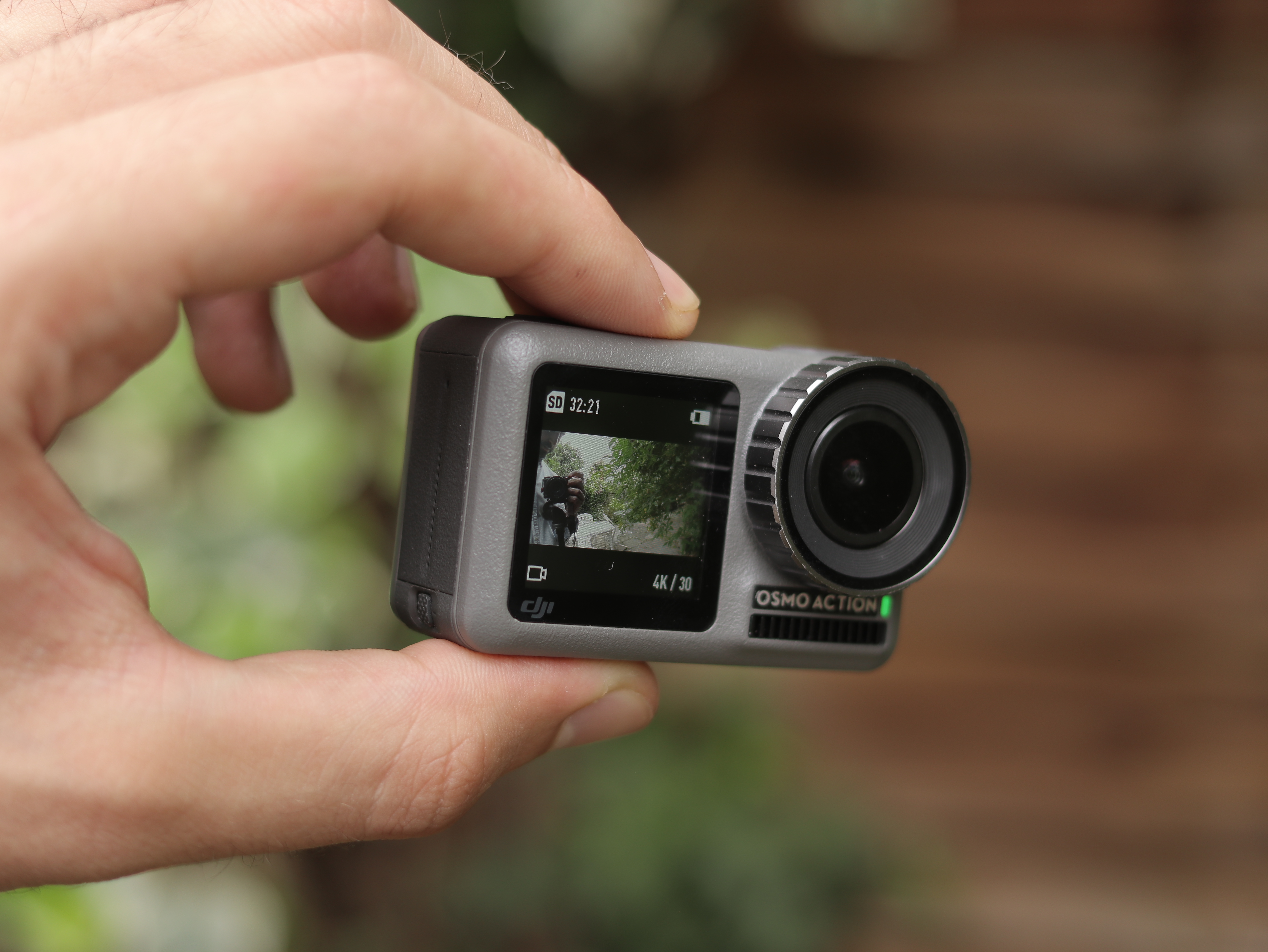
Considering this is DJI’s first action cam, it does a fantastic job of out GoProing the GoPro Hero7 Black in a couple of key areas.
The RockSteady stabilisation is sensational, and the fact its metering optimises everything to make faces look great means it’s an ideal choice for vloggers.
Its front screen is also welcome and is super handy for selfie videos.
The Osmo Action does have more idiosyncrasies than the Hero7 Black, the delay between what’s being recorded and the live preview could be problematic in certain use-cases, and the terrible app connectivity is, well, terrible.
That said, if you’re looking for a smart shooter that undercuts the competition, and captures footage you don’t have to faff with to get the best from, DJI’s Osmo Action is a fantastic bit of kit.
Stuff Says…
Despite a couple of quirks, the Osmo Action’s great video quality, rich design and RockSteady stabilisation – which seems to defy the laws of physics – make it a stellar action cam
Good Stuff
Rocksteady stabilisation is excellent
Great for vlogging
Respectable battery life
Bad Stuff
Delayed on-screen preview
Terrible app reliability
Limited accessory rang
